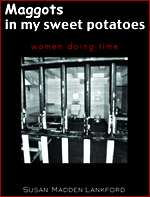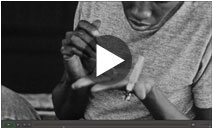The plight of women in the American prison system is one that we covered extensively in Maggots in My Sweet Potatoes: Women Doing Time. Is is a blot on our honor as a country that we allow their circumstances to remain so dire.
Some women are fighting back this week. In the divergent states of Virginia and New Hampshire, lawsuits have been filed by female inmates about the conditions and programs of their incarceration.
In Virginia plaintiffs Cynthia B. Scott, Bobinette D. Fearce, Patricia Knight, Marguerite Richardson and Rebecca Scott have filed a suit alleging that the medical care at their women’s prison is so deficient that it violates the U.S. Constitution’s ban on cruel and unusual punishment.
The suit was filed against several prison officials and Armor Correctional Health Services Inc. Armor is a Miami-based company whose contract with the Virginia Department of Corrections is to provide medical care at Fluvanna Correctional Center for Women’s Care the plaintiffs describe as dangerously substandard.
Since Armor is a for-profit company, it is hardly surprising that the allegations assert that the situation in Virginia is directly caused by cutting corners in order to maximize profit.
Larry O’Dell of the Associated Press took note of this in his recent coverage of the lawsuit:
The complaint says medical staff members have failed to devote sufficient time, provide necessary referrals to outside providers, prescribe effective medication, or carry out specialists’ orders — all to save money. Prisoners suffering incontinence have been denied more lenient restroom privileges based on unexplained security concerns, the lawsuit says.
According to the plaintiffs, deficient health care contributed to the deaths of at least two inmates: Darlene White, a diabetic who died in the infirmary in December 2011 after complaining of severe headache and nausea, and Jeanna Wright, whose complaints of severe stomach pain and bleeding were dismissed by prison doctors until she was finally diagnosed by an outside physician as having abdominal cancer.
The for-profit approach to incarceration is a plague upon our country. When profit comes first, justice is often absent. Consider the explosive growth in the number of incarcerated citizens we have seen since the 1980s. One major source of that spike in imprisonments is the fact that most contracts privatizing prisons include a clause demanding a certain level of population in those facilities. Quotas like this have nothing to do with justice.
Meanwhile, up the coast from the legal action in Virginia, another lawsuit is being levied by female prisoners in New Hampshire.
Danielle Woods, Janice Hutt and Martha Thibodeau, who are at the Goffstown prison, and Michelle Vanagel, who is at the Shea Farm Community Correctional Facility in Concord, brought suit last Monday in Merrimack County Superior Court alleging the state Department of Corrections hasn’t abided by a 1987 federal court order demanding that it provide female inmates with services comparable to those offered to men. The services in question include vocational education, work, mental health and substance abuse treatment, education and housing programs. All of these are programs that are proven to reduce recidivism.
The suit should come as no surprise; after all it was only a year ago that New Hampshire was excoriated by a federal civil rights committee for it’s treatment of female prisoners.
Joseph C. Cote of the Nashua Telegraph takes note:
Last year, the advisory committee to the New Hampshire Commission of Civil Rights, a federal civil rights committee, said women in the Goffstown prison were victims of “inexcusable neglect” in their treatment compared to male inmates.
The lack of adequate job training, mental health and substance abuse treatment or private space for family visits all raise well-founded questions about whether the women are denied equal protection under the U.S. Constitution, concluded the group that studied the issue.
The inferior treatment speaks to why New Hampshire is one of the only states where women, upon their release, return to prison at higher rates than men, the report continued.
The commission found job training for women inmates in Goffstown consists of “three sewing machines in the corner” while men at the State Prison in Concord have elaborate work space for woodworking, upholstery, plate making and bulk mail preparation programs.
New Hampshire’s Goffstown facility was opened in 1987 as a temporary facility. Since them both Democratic and Republican Legislatures had turned down approximately $37 million in funding requests for the construction of of both transitional and permanent facilities for women.
The one hopeful sign was in 2009 when $2.3 million was approved to explore sites for a new women’s prison. One year later that funding was eliminated by budget cuts.
Two states, two seemingly separate battles that are tied together by the common thread of our nation’s failings when it comes to the rights of women behind bars. Hopefully these lawsuits will help mark a path toward positive reform.





















